Chemical Physics
Spring: Oct 15 (Chem only)
Summer: n/a
Overview
Offered in collaboration with the Departments of Chemistry and Physics and Astronomy, the PhD in Chemical Physics is for mathematically inclined chemistry graduate students or the atomic-molecularly focused physics graduate students. The curriculum melds Chemistry and Physics, with more emphasis on chemical synthesis than the core program in Physics and more electricity and magnetism than the core program in Chemistry. This combined program will prepare you for careers in this recognized interdisciplinary area.
Program Outcomes
In addition to valuable professional skills training and experience in teaching, all graduates of the Chemical Physics PhD program have led one or more independent research projects while being mentored by faculty at the top of their fields. You will learn how to find, understand, and critically evaluate primary literature, and you will learn how to write, display, and communicate chemical science information for both nonscientific and expert audiences. You'll also learn about other important aspects of research including matters of safety, ethics, integrity, diversity, and inclusion.
Graduates of the Chemical Physics PhD program are well-trained for research careers in a wide range of fields spanning theoretical and experimental chemistry, physics, spectroscopy, and materials. Our alumni have gone on to a wide range of academic, governmental or private sector research jobs in energy, materials, surface science, and catalysis.
Home Departments
This exciting program is offered by two Departments: Chemistry and Physics in Astronomy. Students apply to and enroll in the program through one of these departments (referred to as the 'home departments'), either as a prospective student or as a current student after being accepted by one of the departments’ programs (e.g., after they have already started their PhD).
Upon completion of the doctorate, your transcript will denote that your degree is either a PhD in Chemistry: Chemical Physics or a PhD in Physics: Chemical Physics, depending on your home department.
Application Requirements
- Application fee
- Resume/CV
- Official TOEFL, IELTS, or Duolingo English Test scores, if applicable.
- Transcripts
- Three letters of recommendation. Note: Applicants do not need the support of a current Tufts faculty member to apply to this program.
- Our admissions process evaluates each applicant holistically. We look for individuals who can demonstrate preparedness for graduate-level Chemistry or Physics coursework and preparedness for independent research. Preparedness can be demonstrated in a large variety of ways, so your statement is an opportunity for us to learn about you as a scientist and as a person. It may be helpful if you address some of the following questions in your statement. We prefer you address the below questions in a coherent narrative rather than in standalone paragraphs. Please use 11-point font and do not exceed 3 pages.
- Please describe your long-term goals and how a graduate degree in Chemistry or Physics will help you achieve them.
- If you have participated in a research project (including course-based research), describe how your personal, intellectual, and creative contributions altered the course of the project.
- What research are you interested in pursuing in graduate school? How do the research programs of specific faculty in our program align with your interests?
- Please share any circumstances that affected your academic performance.
- How have you built on your strengths and worked to improve areas of weakness? How have you responded to challenges and critical feedback you have received?
- Please describe how you built, contributed to, and enriched the communities to which you belong.
Note: Applicants do not need the support of a current faculty member to apply to this program.
Tuition and Financial Aid
See Tuition and Financial Aid information for GSAS Programs.
Graduate Research at Tufts
Graduate students at Tufts form a thriving community of researchers that engages in cutting-edge science. Chemistry research at Tufts is highly interdisciplinary, addressing basic questions about how the universe works and how we can use molecular science to improve society. The department's areas of focus include chemical biology, biotechnology, analytical chemistry, surface science, extraplanetary science, catalysis, green energy, inorganic chemistry, organic synthesis, education research, quantum computing, material science, and therapeutics development. Likewise, the Department of Physics applies an interdisciplinary approach to exploring the areas of astronomy and astrophysics, biophysics, condensed matter physics, cosmology, general relativity, particle physics and physics education.
Faculty
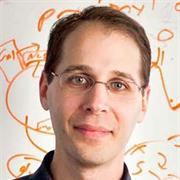
Joshua Kritzer

Joshua Kritzer
Research/Areas of Interest: Bioorganic, Biophysical, & Chemical Biology. Peptides and their mimetics can target protein surfaces in ways small molecules rarely do, making peptide libraries attractive for screening for nontraditional modes of action. The Kritzer research group takes advantage of peptide and peptidomimetic libraries to bypass many of the disadvantages of small molecule screening. They also explore how modifications such as substitution of peptide bonds with isosteres, amide N-methylation, and head-to-tail cyclization affect the activities, specificities, and bioavailabilities of functional peptides. By combining powerful techniques from organic synthesis, biophysical chemistry, molecular biology and genetics, they are developing new molecules and new strategies to attack cancer, inflammation, and autoimmune diseases.

Hugo Beauchemin

Hugo Beauchemin
Research/Areas of Interest: Experimental High Energy Physics My research focuses on the discovery of new fundamental particles of nature, as well as on the understanding of the behavior of the known particles. To do this, I participate in the ATLAS experiment, one of the two general-purpose detectors at the Large Hadron Collider at CERN. My work currently consists in analyzing data in order to: Perform precision measurements leading to a better understanding of the strong interaction within the QCD theoretical framework; Search for new physics in events involving large amount of missing energy, typical signature of new particles that interact very weakly with normal matter such as dark matter candidate; Develop and estimate the performance of the ATLAS trigger system. This last aspect of my work also involves software development and a participation in the detector operation. I'm focusing my efforts on the Missing Energy trigger. The Standard Model of particle physics, despite being very successful, cannot be the end of the story. It contains a certain number of theoretical dissatisfactions. Of all the possibilities, I believe that dark matter is one of our best guess. Its existence is based on experimental facts, and the mass scale of dark matter particles, in the case where it is the right explanation, should be accessible at the LHC. Its existence would be inferred by the observation of missing energy in subset of all collected events. Looking for excesses of events involving large amount of missing energy over expectations is a promising way to look for dark matter at the LHC. My approach is to carry such search by performing precision measurements of Standard Model quantities, to optimize the sensitivity of the analysis to such new particles. Predictions using quantum chromodynamics (QCD) implies many approximations, assumptions or simplifications at various levels. These could lead to large systematic uncertainties on various Standard Model predictions, possibly leading to significant limits in our sensitivity to new phenomena. My research try to determine which of the simplifications and approximations are acceptable at the level of precision needed for a new physics discovery. To this end, I investigate events that contain a vector boson and jets, as they are sensitive to such physics and yet provide a clean enough environment to allow for high precision measurements. These are also the most important background to a wide range of new physics signature. As a side, I am also interested in the philosophy of physics, focusing on epistemological aspects of experiments and simulations as used in High Energy Physics.
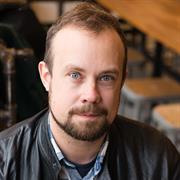
Timothy Atherton

Timothy Atherton
Research/Areas of Interest: Condensed Matter Physics, Soft materials, Colloids, Liquid Crystals, Computational Physics, Physics Education Soft matter physics is the study of matter that is all around us in everyday life: soaps, oil, foods, sand, foams, and biological matter. All of these are readily deformable at room temperature and combine properties of both fluids and solids. Despite their ubiquity, these materials are extremely complicated. Unlike simple fluids like water, they have rich internal structure; unlike crystalline solids they are typically not periodically ordered. Moreover, they exist in long-lived metastable states far from equilibrium and respond to stimuli such as applied electric and magnetic fields, temperature and pressure. My work seeks to understand how these materials respond to shape: how they self-organize on curved surfaces or in complex geometries and how this knowledge can be used both to sculpt desirable shapes at the microscopic scale and create shape changing systems like soft robots. We use high performance computing to simulate and predict these behaviors and work closely with experimentalists at Tufts and beyond.
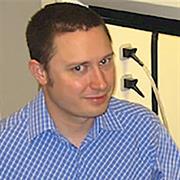
Clay Bennett

Clay Bennett
Research/Areas of Interest: Organic Synthesis, Carbohydrate Chemistry, Synthetic Methodology, Bioorganic Chemistry. Complex carbohydrates play critical roles in a number of biological processes including, protein folding, cellular adhesion and signaling. Despite their importance, very little is understood about the molecular basis of their activity. This is largely due to the fact that the only source of pure oligosaccharides is tedious multi-step synthesis, which can take months or even years to compete. Our research is focused on developing methodologies, based on asymmetric catalysis, to streamline complex oligosaccharide synthesis. Ultimately such methods will aid in the rapid and routine preparation of oligosaccharides for biophysical studies and drug discovery.
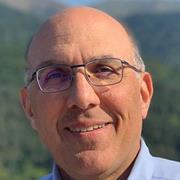
Bruce Boghosian

Bruce Boghosian
Research/Areas of Interest: Applied dynamical systems, applied probability theory, kinetic theory, agent-based modeling, mathematical models of the economy, theoretical and computational fluid dynamics, complex systems science, quantum computation Current research emphasis is on mathematical models of economics in general, and agent-based models of wealth distributions in particular. The group's work has shed new light on the tendency of wealth to concentrate, and has discovered new results for upward mobility, wealth autocorrelation, and the flux of agents and wealth. The group's mathematical description of the phenomenon of oligarchy has also shed new light on functional analysis in general and distribution theory in particular. Secondary projects include new directions in lattice Boltzmann and lattice-gas models of fluid dynamics, kinetic theory, and quantum computation.

Peggy Cebe

Peggy Cebe
Research/Areas of Interest: Condensed Matter Physics, Polymer Physics
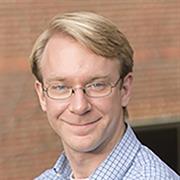
Luke Davis

Luke Davis
Research/Areas of Interest: I am interested in synthesis and characterization in inorganic and materials chemistry. I am especially interested in fundamental or applied chemistry that has important societal implications. My research laboratory has ongoing projects in several areas: Zero-emissions ironmaking. The synthesis of iron metal from iron ore contributes ca. 4% of global carbon dioxide emissions. I am interested in alternative thermochemical methods, such as the use of ammonia, for making iron from iron oxides. This project has extended to other critical metals also. Thin-film photovoltaics with earth-abundant, sulfide-based absorber layers. Thin-film photovoltaics (solar cells) provide electricity from sunlight with just a few hundred nm of light-absorbing material. We are exploring binary and ternary sulfides as top-cell materials for tandem photovoltaics. Earth-abundant molecular light absorbers and emitters. Molecular light absorbers and emitters are used in photoredox catalysis, dye-sensitized solar cells, and organic light-emitting diodes (OLEDs). We are exploring high-spin complexes of iron and manganese to prepare new molecules that absorb and emit light. I am developing new research programs in other areas: New superconducting materials. Near-room-temperature superconductors have recently been realized in compressed hydrides. I am interested in new hydride compounds that are stable at ambient pressure and might serve as ambient-pressure, ambient-temperature superconductors. Volatile molecules carrying metal-atom equivalents for superconducting wires. Cryogenic superconducting wires enable quantum bits based on Josephson junctions. We are developing new molecules and methods to deposit the electropositive metals that make up these wires from chemical vapors.
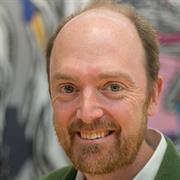
Hugh Gallagher

Hugh Gallagher
Research/Areas of Interest: Experimental particle physics, neutrino oscillations, neutrino interaction physics, neutrino astrophysics, computer simulations of neutrino-nucleus interactions. The main thrust of my research is the study of the neutrino. Through neutrino oscillation experiments, we are gaining insights into neutrino masses and mixing parameters. Precise measurements of these quantities may allow us to uncover the reason behind the matter-antimatter asymmetry in the universe, or point the way to a theory beyond the standard model. Precise measurements of oscillation parameters require good models of neutrino-nucleus interactions. I work on experiments that are studying neutrino oscillations (NOvA and DUNE), on experiments that are providing new data on neutrino-nucleus interactions (MINERvA), and on a widely-used software package (GENIE) that is used to simulate neutrino-nucleus interactions.
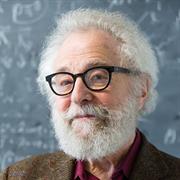
Gary Goldstein

Gary Goldstein
Research/Areas of Interest: Theoretical high energy and nuclear physics, Science and society, Science education Theories of fundamental constituents of matter, Quantum Chromodynamics, tests of the Standard Model and beyond, the role of spin and angular momentum in particle interactions at medium and high energies. The role of science in public policy; non-proliferation of nuclear arms; education for peace.

David Hammer

David Hammer
Research/Areas of Interest: Research on learning and instruction. My research is on learning and teaching in STEM fields (mostly physics) across ages from young children through adults. Much of my focus has been on intuitive "epistemologies," how instructors interpret and respond to student thinking, and resource-based models of knowledge and reasoning.
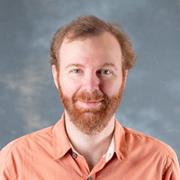
Mark Hertzberg

Mark Hertzberg
Research/Areas of Interest: Theoretical Physics: Cosmology, Particle Physics, Astrophysics. My primary research is in physics at the interface between theoretical cosmology and particle physics, including astrophysics and aspects of quantum field theory. By studying the extreme conditions of the very early universe, as well as the properties of the late universe's dark constituents, and analyzing the results of various ground based experiments, we can gain insights into the fundamental laws of nature. This acts as the driving force behind much of my research, although I sometimes investigate other interesting subjects. A central focus has been on trying to understand the nature of dark matter, which forms the majority of matter in the universe. There are various interesting candidates for the dark matter, including so-called axions, which may organize into new interesting types of structures. Furthermore, I have worked on the understanding the large scale structure of the universe, which gives insights into the initial conditions of the early universe. Another focus has been on understanding cosmological inflation, which is the leading idea for the earliest moments of our universe, involving an early phase of rapid expansion. I have worked on connecting inflation to the matter anti-matter asymmetry of the universe and worked on the post-inflationary era where the universe needs to transition to a hot soup of particles. A recent interest is in pursuing a fundamental understanding of gravitation. I am interested in understanding the full set of theoretical and observational constraints that determine the structure of gravitation, including constraints from quantum mechanics. Furthermore, I sometimes investigate interesting quantum phenomena, including entanglement entropy and the Casimir effect.

Samuel Kounaves

Samuel Kounaves
Research/Areas of Interest: Planetary Chemical Analysis & Astrobiology - Over the past several decades it has become increasingly clear that there may be multiple worlds in our solar system besides Earth that either once had or may still have environments capable of supporting microbial life as we know it. Our current NASA supported research is focused on two aspects of the search for life in our solar system: 1. In the search for past or present life on Mars, our goal is to understand how biologically-produced molecules (biomarkers) are altered when exposed to solar UV irradiation in the presence of oxychlorines and their intermediate products, and if the resulting "fragmentation" patterns can be used, in conjunction with Molecular Assembly Theory, to identify the original biomarker and thus provide evidence for life on Mars. More > 2. We are developing microfluidic electroanalytical instrumentation, based on the Phoenix Mars lander Wet Chemistry Lab, to determine: (a) the habitability of the subsurface oceans of Saturn's moon Enceladus by analyzing the ejected ice particles collected by transits through the plumes. (b) the chemistry of the oxychlorines (oxidants) in the martian surface materials, both to understand their potential effects on potential microbial life, and their possible health effects on human explorers and habitats on Mars.
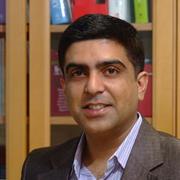
Krishna Kumar

Krishna Kumar
Research/Areas of Interest: Bioorganic Chemistry and Chemical Biology The research interests of the Kumar laboratory are centered on the (1) use of chemistry to design molecules to interrogate and illuminate fundamental mechanisms in biology, or be used as therapeutics; and (2) use of biology to "evolve" and "select" molecules that can perform chemistry in non-biological and medicinal settings. These are some questions we are trying to answer: (i) Is it possible to design and mimic natural proteins and other biological macromolecules by use of building blocks that nature does not use – and whether such constructs can be endowed with properties that are not found in biology?; (ii) How did the first enzymes arise in the imagined Darwin's pond – is there a way to recreate this scenario and in the process develop a fundamentally new method to create enzymes?; (iii) Biology uses phase separation, that is, clustering of different compounds in confined locations – a process that is key in orchestrating the daily activities of a cell – can we find methods that can predictably dictate where molecules are located in a given environment and thereby direct the phenotype that is generated?; (iv) Can we rationally design small molecules and peptides that can function against antibiotic resistant bacteria that are threatening the most basic tenet of modern medicine?
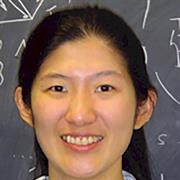
Yu-Shan Lin

Yu-Shan Lin
Research/Areas of Interest: Theoretical and Computational Biophysical Chemistry. The YSL Group aims to elucidate the structures and functions of biomolecules by integrating the power of advanced computations with the elegance of chemical theory. Our focus is to develop and apply computational methodology to significant biological problems that are difficult to address experimentally. Two major research projects in the YSL Group are (1) to understand and design cyclic peptides with desired conformations to modulate protein–protein interactions and (2) to elucidate the structural and functional roles of post-translational modifications and non-natural amino acids on protein folding.
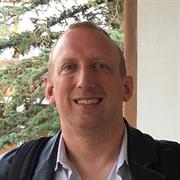
Peter Love

Peter Love
Research/Areas of Interest: Quantum Information, Quantum Simulation, Adiabatic Quantum Computation, Computational Physics Quantum information faces three basic questions. Firstly, what are quantum computers good for? Secondly, how do we build one? Thirdly, what will quantum information contribute if technological obstacles to constructing a large scale quantum computer prove insuperable? The first question is the search for problems which quantum computers can solve more easily than classical computers. The second is an investigation of which physical systems one could use to build a quantum computer. The third leads to the search for spinoffs in classical computation, and the question of where the classical/quantum boundary lies. I am interested in all three questions.

Charlie Mace

Charlie Mace
Research/Areas of Interest: Bioanalytical and Materials Chemistry. To solve outstanding problems in global health, the Mace Lab applies a multidisciplinary approach combining aspects of analytical chemistry, materials science, and engineering. The primary goal of the Mace lab is to develop low cost, patient-centric technologies that can improve access to healthcare. To achieve this, the Mace Lab designs devices that improve the self-collection of blood and enable the diagnosis of diseases in resource-limited settings, and they are exploring ways the methods that are developed in the lab can used by others. Their main techniques leverage the properties of paper and other porous materials to integrate function into simple, affordable devices. Unique to laboratories in Chemistry departments, his group specializes in handling human blood and saliva. Technologies developed in the Mace lab have made the leap to clinical sites in Africa, South America, and the US, owing to their network of clinical, academic, and industry collaborators. The Mace Lab has broad expertise in assay development and device prototyping, which they apply to evaluating the efficacy of candidate therapeutics, performing separations that lead to new measurements, and making field-deployable kits for point-of-care testing. They have additional expertise in instrument development, phase separation in systems of polymers, and microfluidics.
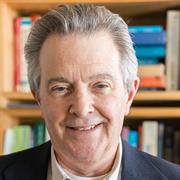
W. Anthony Mann

W. Anthony Mann
Research/Areas of Interest: Experimental high energy physics, elementary particle interactions, neutrino oscillations, neutrino-nucleus interactions, baryon instability searches. Design and execution of experimental measurements that reveal or constrain the existence of new elementary particles, that delineate the properties of known elementary particles, and that quantify the interactions and symmetries that govern fundamental energy systems of the subatomic realm.

Danilo Marchesini

Danilo Marchesini
Research/Areas of Interest: Astronomy; galaxy formation and evolution; extra-galactic surveys; active galactic nuclei; near-infrared astronomy Understanding how galaxies form and evolve means understanding how the tiny differences in the distribution of matter inferred from the cosmic microwave background radiation grew and evolved into the galaxies we see today. The working hypothesis is that galaxies form under the influence of gravity, and galaxy formation can be seen as a two-step process. First, the gravity of dark matter causes the tiny seeds in the matter distribution to grow bigger with time. As they grow more massive, the gravitational attraction becomes stronger, making it easier for these structures to attract additional matter. As the dark matter structures grow, they pull in also the gas, made of hydrogen and helium, which is the primary ingredient for the formation of stars, and hence for the formation of the stellar content of galaxies. The formation of the stellar content inside these dark matter structures involves many physical processes that are much more complicated and quite poorly understood from a theoretical perspective. These physical processes include, for example, how gas cools and collapses to form stars, the process of star formation itself, merging of galaxies, feedback from star formation and from active super-massive black holes. My research activity in the past decade has focused on understanding how galaxies formed after the Big Bang, and how their properties (e.g., the stellar mass, the level of star formation activity, the morphology and structural parameters, the level of activity of the hosted super-massive black hole, etc.) have changed as a function of cosmic time. Since we cannot follow the same galaxy evolving in time, we need to connect the galaxies we observe at a certain redshift (i.e. a certain snapshot in time) to those we observe at a smaller redshift (i.e., at a later time in cosmic history) in order to infer how the properties of galaxies have actually changed and what physical mechanisms are responsible for these changes. The better we understand the galaxy properties at a certain time and the more finely in time we can probe the cosmic history, the easier it becomes to connect galaxies' populations seen at different snapshots in time, linking progenitors and descendants across cosmic time. Ultimately, my research aims at understanding what galaxy population seen at one epoch will evolve into at a later epoch, and what physical processes are responsible for the inferred changes in the galaxies' properties. In order to do this, I have adopted two different but complementary approaches. The first approach consists of statistical studies of the galaxy populations at different cosmic times; the second approach consists of detailed studies of individual galaxies to robustly derive their properties.
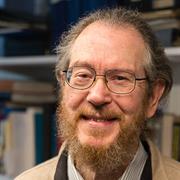
Austin Napier

Austin Napier
Research/Areas of Interest: Experimental Particle Physics, Electromagnetic Theory, Computational Physics. High Energy Physics: studies of heavy quarks, new particle searches, tests of the Standard Model. Computational Physics: data analysis, simulation, electromagnetism.

Ken Olum

Ken Olum
Research/Areas of Interest: Gravitational waves, cosmic strings, energy conditions in general relativity, anthropic reasoning in cosmology.
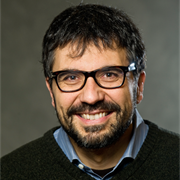
Fiorenzo Omenetto

Fiorenzo Omenetto
Research/Areas of Interest: ultrafast nonlinear optics, nanophotonics, biopolymer multifunctional materials, material science, photonic crystals, photonic crystal fibers
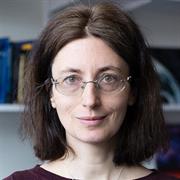
Anna Sajina

Anna Sajina
Research/Areas of Interest: Extragalactic astrophysics How did galaxies and their central black holes co-evolve from the Big Bang to the present? Despite much progress through large scale galaxy surveys as well as ever more sophisticated numerical simulations, we are still hampered by the fact that much of the star-formation activity and black hole growth are buried in thick cocoons of dust and gas. Observations suggest that much of this activity took place in the past, before the Universe was half its present age, and likely involved mergers of nearly equal sized galaxies. As the merger progresses, gas and dust are more and more concentrated, triggering prodigious star-formation and gradually increasing accretion onto the central black hole (Active Galactic Nuclei or AGN). The process is short lived as supernovae- or AGN-driven winds lead to a 'blow-out' event which disperses the intervening gas and dust halting further star-formation and black hole growth. Indications that starbursts and AGN may regulate each other as above can be seen in the local correlation between the mass of a central black hole and the stellar mass of its host galaxy. The same galaxy observed at different stages of this process can appear very different. Therefore observations of different types of galaxies at different epochs and in different wavelength regimes are crucial to build a more complete understanding of the whole process.

Rebecca Scheck

Rebecca Scheck
Research/Areas of Interest: Chemical Biology and Bioorganic Chemistry. The post-translational modification (PTM) of proteins is an essential cellular vocabulary that allows critical information to be communicated within and between cells. The Scheck lab pioneers new chemical biology tools that enable the decoding of PTM networks. We use these methods to unlock previously unattainable information about how PTMs are integrated into signaling networks in living cells. Our focus is on PTMs with unusual mechanisms that make them particularly complicated to study using traditional tools, which typically inhibit or profile specific enzyme activities. We use an integrated mass spectrometry and chemical biology approach to develop new, selective chemistries and chemical methods that can predictably modulate, track, or capture specific PTMs, like glycation, ubiquitination, or phosphate B-elimination. Learning how these signals are interpreted or degraded will provide access to new therapeutic targets for preventing or treating neurodegenerative diseases, bacterial infection, autoimmune disease, cancer, diabetes, and age-related diseases.
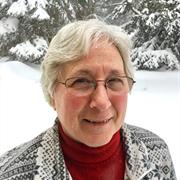
Mary Shultz

Mary Shultz
Research/Areas of Interest: Physical Chemistry and Surface Science. The Shultz group applies physics and chemistry to understand the inner workings of hydrogen bonding. Hydrogen bonding plays key roles in environmental, biological, and atmospheric chemistry. Our program has research thrusts in all three directions. We specialize both in devising environments that clearly reveal key interactions and in developing new instrumentation. The most recent focus is on icy surfaces and on clathrate formation. Probing the ice surface begins with a well-prepared single-crystal surface. We have unique capabilities for growing single-crystal ice from the melt and for and preparing any desired ice face. Our clean water efforts are aimed at developing new materials to fill the significant need for safe drinking water. According to the World Health Organization, over one billion people lack safe drinking water. Our program is based on using photo catalysts to capture readily available sunlight to turn pollutants into benign CO2 and water. We developed methods to grow ultra-nano (~2 nm) particles that have well-controlled surface structures and chemistry.
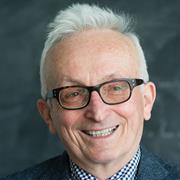
Krzysztof Sliwa

Krzysztof Sliwa
Research/Areas of Interest: Physics of elementary particles The Standard Model, gauge theories; also topology, differential geometry and other branches of modern mathematics to better understand quantum gauge theories, the origin of mass and the structure of space-time, matter and all interactions, including gravity. I am a member of the ATLAS collaboration at the LHC. Studies of Higgs boson and top quarks. The main objective is to find out whether the new particle discovered in 2012 is a minimal Standard Model Higgs, or some other kind. Studies of top quarks are very interesting on their own. Because of very large mass of the top quark, its lifetime is very short, ~ 5x10^{-25} seconds, much shorter that the characteristic time of the strong interactions. As a consequence, top quark decays before any strong interaction effects may take place. This allows a direct access to the information about the quark spin, which is very difficult, if not impossible, for any other quark. Studies of top quarks are very important for other searches, as top quarks will constitute the most important background for almost any final states due to "new physics" and have to be understood very well. We are using very advanced multidimensional analysis techniques, developed by our group (Ben Whitehouse and I). Topology and geometry of the Universe In the Standard Cosmological Model (SCM), the starting point is an interpretation of the observed redshift of spectral lines from distant galaxies as a Doppler shift in the frequency of light waves as they travel through an expanding Universe. Acceptance of this hypothesis led to the ideas of the Big Bang and the LambdaCDM, the Standard Model of cosmology. Remarkably, there exist another explanation of the cosmological redshift. As shown by Irving Ezra Segal, a mathematician and a mathematical physicist, the same axioms of global isotropy and homogeneity of space and time, and its causality properties, are satisfied not only by the Minkowski spacetime R x R^3, but also by a Universe whose geometry is R X S^3. In Segal's model, the geometry of the spatial part of the Universe is that of a three-dimensional hypersurface of a four-dimensional sphere. Locally, it is indistinguishable from the flat Minkowski spacetime. It is the geometry of the Einstein static Universe, which he abandoned when the interpretation of the increase of redshift with distance was universally accepted as evidence for expanding Universe. If the universe is R1 x S3 but observations are made in flat Minkowski frame, then such an observer measures the "projections" from R1 x S3 into flat R1 x R3. The redshift in Segal's model arises in a geometric way analogously to distortions which appear when making maps using stereographic projection from S^2, a two-dimensional curved surface of a sphere in three dimensions, onto a flat surface of a map, R^2. Segal's theory makes a verifiable prediction for the redshift as a function of distance. The comparison, although in principle very simple, is non-trivial. For more distant objects, one can only estimate the distance using various proxies, for example the magnitude, if one assumes that the chosen sources have the same absolute luminosity. Surprisingly, Segal's model cannot be falsified with the currently available data. The magnitude-redshift data for supernovae agree very well with SCM, but it also agrees with Segal's model. There exist another independent observable, the number of observed galaxies as a function of redshift z, N(< z). Assuming that galaxies are uniformly distributed in the Universe, their number is proportional to the volume enclosed in a given fixed angular field of view, and the dependence of this volume on the manifold distance is sensitive to the geometry of the Universe. Two Tufts undergraduate students, Maxwell Kaye and Nathan Burwig, joined me in this analysis. We examined the data from several Hubble Deep Fields, and found that the number of observed galaxies as a function of redshift is also in very good agreement with Segal's model. We are continuing with a study of these fundamental questions about the topology and geometry of our Universe. Interestingly, I have also shown recently that one can explain the observed value of the CMB temperature, following Segal's original idea that the CMB appears unavoidably as a result of light traveling many times around a closed spatial part of the R X S^3 Universe. Magnetic monopoles I am also a member of MoEDAL, a small collaboration looking for magnetic monopoles at the LHC.
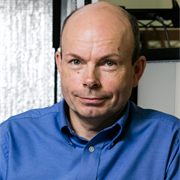
Igor Sokolov

Igor Sokolov
Research/Areas of Interest: Present: Engineering for Health -> Physics of cancer and aging -> Mechanics of biomaterials at the nanoscale, Synthesis and study of functional nanomaterials for biomedical imaging and drug delivery, Advanced imaging for medical diagnostics, Novel processes and materials for dentistry: nano-polishing and self-healing materials. Favorite experimental techniques: atomic force microscopy/scanning probe microscopy, confocal microscopy and spectroscopy, nanoindenters. Favorite theoretical methods: contact models, machine learning methods. Past: quantum field theory, theory of gravity, cosmology, Casimir effect.
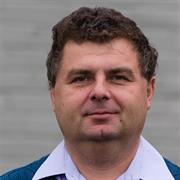
Cristian Staii

Cristian Staii
Research/Areas of Interest: Biological Physics, Condensed Matter Physics, Quantum Mechanics My research interests cover a broad array of topics in biological physics, condensed matter physics and quantum mechanics. In biological physics our group is performing both experimental and theoretical work to uncover fundamental physical principles that underlie the formation of functional neuronal networks among neurons in the brain. One of the primary challenges in science today is to figure out how as many as 100 billion neurons are produced, grow, and organize themselves into the truly wonderful information-processing machine which is the brain. We combine high-resolution imaging techniques such as atomic force, traction force and fluorescence microscopy to measure mechanical properties of neurons and to correlate these properties with internal components of the cell. Our group is also using mathematical modeling based on stochastic differential equations and the theory of dynamical systems to predict axonal growth and the formation of neuronal networks. The aim of this work is twofold. On the one hand we are using tools and concepts from experimental and theoretical physics to understand biological processes. On the other hand, active biological processes in neuronal cells exhibit a wealth of fascinating phenomena such as feedback control, pattern formation, collective behavior, and non equilibrium dynamics, and thus the insights learned from studying these biological systems broaden the intellectual range of physics. I am also interested in the foundations of quantum mechanics, particularly in decoherence phenomena and in applying the theory of stochastic processes to open quantum systems. My interests in condensed matter physics include quantum transport in nanoscale systems (carbon nanotubes, graphene, polymer composites, hybrid nanostructures), as well as scanning probe microscopy investigations of novel biomaterials.

E. Charles Sykes

E. Charles Sykes
Research/Areas of Interest: Physical Chemistry, Surface Science, and Nanoscience. The Sykes group utilizes state of the art scanning probes and surface science instrumentation to study technologically important systems. For example, scanning tunneling microscopy enables visualization of geometric and electronic properties of catalytically relevant metal alloy surfaces at the nanoscale. Using temperature programmed reaction studies of well defined model catalyst surfaces structure-property-activity relationships are drawn. Of particular interest is the addition of individual atoms of a reactive metal to a relatively inert host. In this way reactivity can be tuned, and provided the energetic landscapes are understood, novel bifunctional catalytic systems can be designed with unique properties that include low temperature activation and highly selective chemistry. Newly developed curved single crystal surface are also being used to open up previously inaccessible areas of structure sensitive surface chemistry and chiral surface geometries. In a different thrust, the group has developed various molecular motor systems that are enabling us to study many important fundamental aspects of molecular rotation and translation with unprecedented resolution.
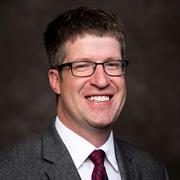
Samuel Thomas

Samuel Thomas
Research/Areas of Interest: Organic Materials Chemistry Our group applies the philosophy of physical organic chemistry to organic materials, in the forms of polymers, crystals and surfaces. Specifically, we investigate new materials that show macroscopic changes in properties upon exposure to external stimuli. Our main focus has been new materials that respond to light, which has a unique combination of characteristics: i) easy control over where light goes and when it goes there (spatiotemporal control), ii) easy control over intensity and energy, and iii) the ability to pass through many solid materials that traditional chemical reagents cannot. Our research has focused in three separate areas. 1. Photochemical control of charge. As interactions between charges dictate much of molecular behavior, controlling charge can yield control over matter. We have developed a series of materials in which light switches the charge-based interactions between polymer chains from attractive. By combining this top-down fabrication approach of with the bottom-up fabrication method of layer-by-layer assembly, we have developed thin films in which photochemical lability is confined to individual nanoscale compartments, yielding photo-delaminated free-standing films and multi-height photolithography. 2. Using functional side chains to control conjugated materials. Conjugated materials hold great promise for applications including solar cells and displays. We have focused on expanding the role of the side-chains of these materials, which occupy up to half of their mass but are typically reserved only for solubility. Early work in our group focused on integrating photolabile side chains for negative conjugated photoresists. This has evolved to using the non-covalent interactions of aromatic side-chains for controlling interactions between molecules, and therefore their material properties, including the use of mechanical force to control luminescence—mechanofluorochromism. 3. Singlet-oxygen responsive materials. Singlet oxygen (1O2) is a critical reactive oxygen species in photodynamic therapy for cancer as well as in damage to plants upon overexposure to light. Its photochemical production is also chemically amplified through a photochemical reaction, which is the lynchpin of several commercial bioanalytical technologies. Through a combination of fundamental physical organic chemistry and materials chemistry, we have luminescent conjugated polymer nanoparticles as probes for 1O2 in water that shows improved limit of detection over the commercially available luminescent probe for 1O2.

Roger Tobin

Roger Tobin
Research/Areas of Interest: Experimental condensed matter physics; physics education For most of my career, my primary physics research area has been experimental surface science. In my lab at 574 Boston Ave., my students and I have studied what happens when foreign atoms and molecules form chemical bonds with metal surfaces. Our research has had implications for a range of potential applications including catalysis, chemical sensing, and the growth of thin films and nanoparticles on surfaces. In recent years my focus has shifted towards physics education, at both the college and, especially, at the elementary school level. Together with collaborators at a local nonprofit organization and at other universities, I have helped to develop and study curriculum materials and professional development strategies for the study of matter and energy in grades 3-5. In my own classes at Tufts, I have implemented and studied a range of instructional approaches aimed at more effective and equitable learning.

Arthur Utz

Arthur Utz
Research/Areas of Interest: Physical and Surface Chemistry. The Utz group studies how molecules react on surfaces. Reactions at the gas-surface interface are highly dynamical events. Large-scale atomic and vibrational motions transform reactants into products on sub-ps and Å scales. The experiments probe ultrafast nuclear motion and energy flow dynamics that underlie heterogeneous catalysis and chemical vapor deposition. The goal is to to better model existing processes and direct the rational design of new catalytic materials and deposition techniques. The experiments use vibrational- and rotational-state selective laser excitation of molecules in a supersonic molecular beam to provide precise control over the energetics and orientation of the gas-phase reagent as it approaches the surface. Reaction probability and product identity is then quantified as a function of the reagent's energetic configuration. These experiments have shown that the vibrational state of the incident molecule can have a profound effect on reaction probability, and suggest that energy redisribution within the reaction complex is not complete prior to reaction and that the competing kinetics of energy redistribution and reaction might be manipulated to control the outcome of a reaction. This has been subsequently confirmed by exerting bond-elective control over a heterogeneously catalyzed reaction.
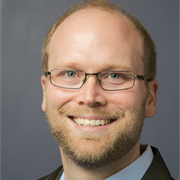
Thomas Vandervelde

Thomas Vandervelde
Research/Areas of Interest: Interaction of light with matter, physics of nanostructures and interfaces, metamaterials, material science, plasmonics, and surfactants, semiconductor photonics and electronics, epitaxial crystal growth, materials and devices for energy and infrared applications.
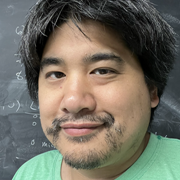
Taritree Wongjirad

Taritree Wongjirad
Research/Areas of Interest: My current focus is on measuring the properties of the neutrino, one of the fundamental particles of the Standard Model. We know a few things about the neutrino: it has a very small mass, has no electric charge, comes in three types — or flavors — and interacts only via the weak force and gravity. However, there are many things we do not know. What is the exact mass of the neutrino? And how does it get its mass? Are the three we know about the only kinds that exist? Answers to these questions impact not only our understanding of the fundamental laws of matter but also have consequences for our understanding of how the universe evolved. These and many other questions make the neutrino a fascinating particle. However, as mentioned above, neutrinos interact only via the weak force. They interact so rarely that, at the energies, we typically work with, neutrinos can pass through light-years long block of lead without striking it. This makes neutrino experiments challenging as we need to build massive, building-sized detectors which are instrumented with relatively, low-cost sensors. However, the challenge is often fun, as we are often forced to apply the newest technologies in both hardware and software to design and complete our experiments.